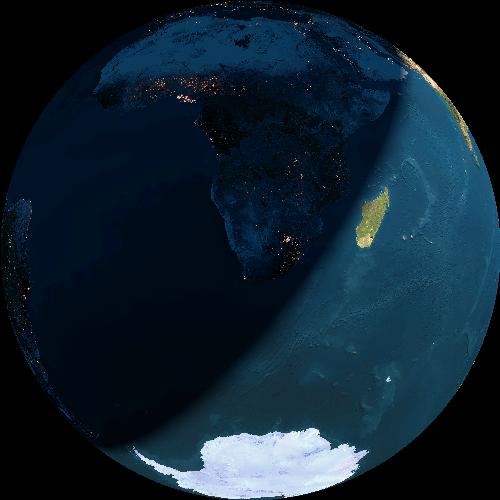Here is a star chart (for January, 2002 from Sky & Telescope) that shows the central role played by the ecliptic. Notice all of the objects that appear near the ecliptic.
Also notice that the great circle of the ecliptic is not the same as the great circle of the Celestial Equator. The Celestial Equator reflects the orientation of the Earth's rotation axis, which is tilted in relation to the plane of the earth's orbit around the Sun.

The constellation Orion, for example, straddles the Celestial Equator but is actually quite far from the ecliptic.
Ancient astronomers divided the stars near the ecliptic into twelve constellations, the constellations of the Zodiac.
Another indication of the tilt of the earth's axis can be seen in this (computer-generated) picture of the Earth as seen from space in January. The rotation axis is vertical in this picture, as you can see from the Antarctic ice cap. Notice the direction that the sunlight is coming from. Can you see why it is cold in the North at this time of year?

Because the rotation axis always points in the same direction (towards Polaris) as the Earth goes around the Sun, it eventually points the northern hemisphere toward the Sun and we get summer.
